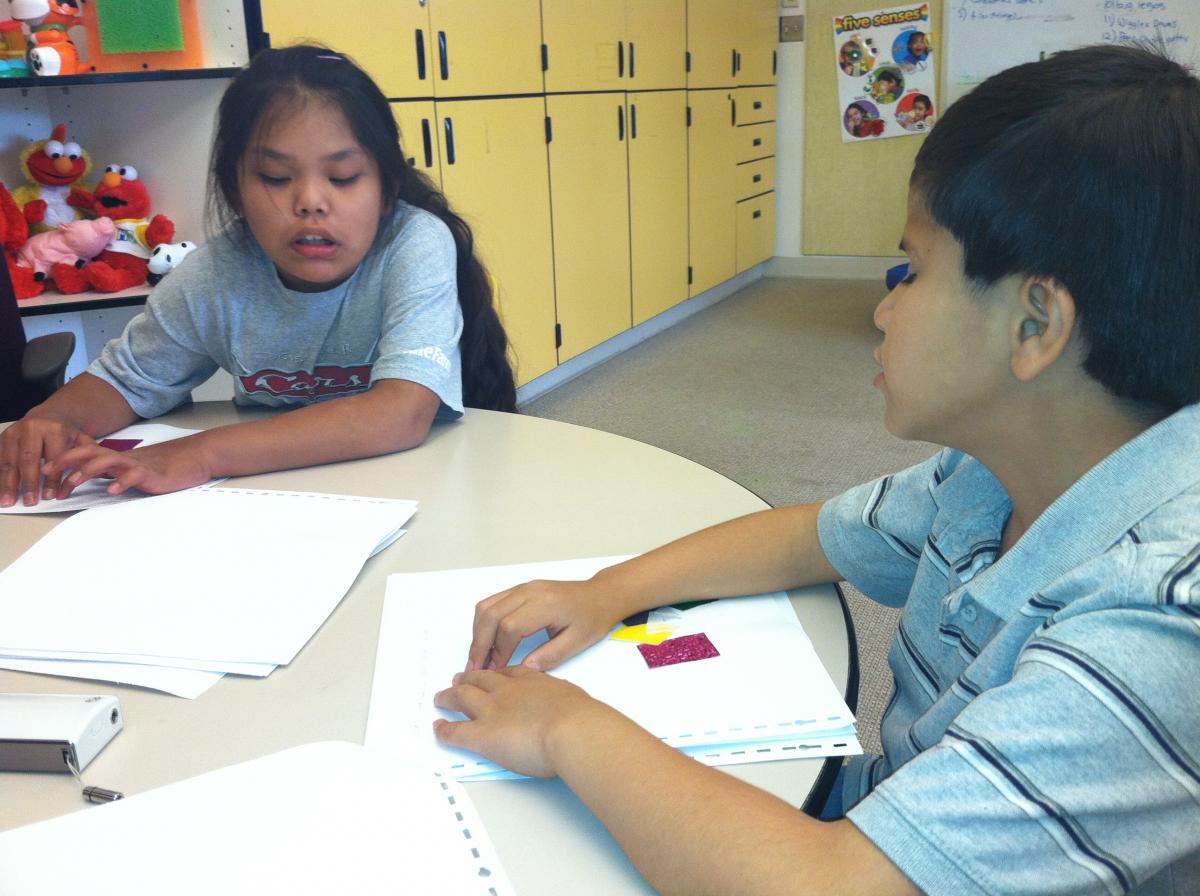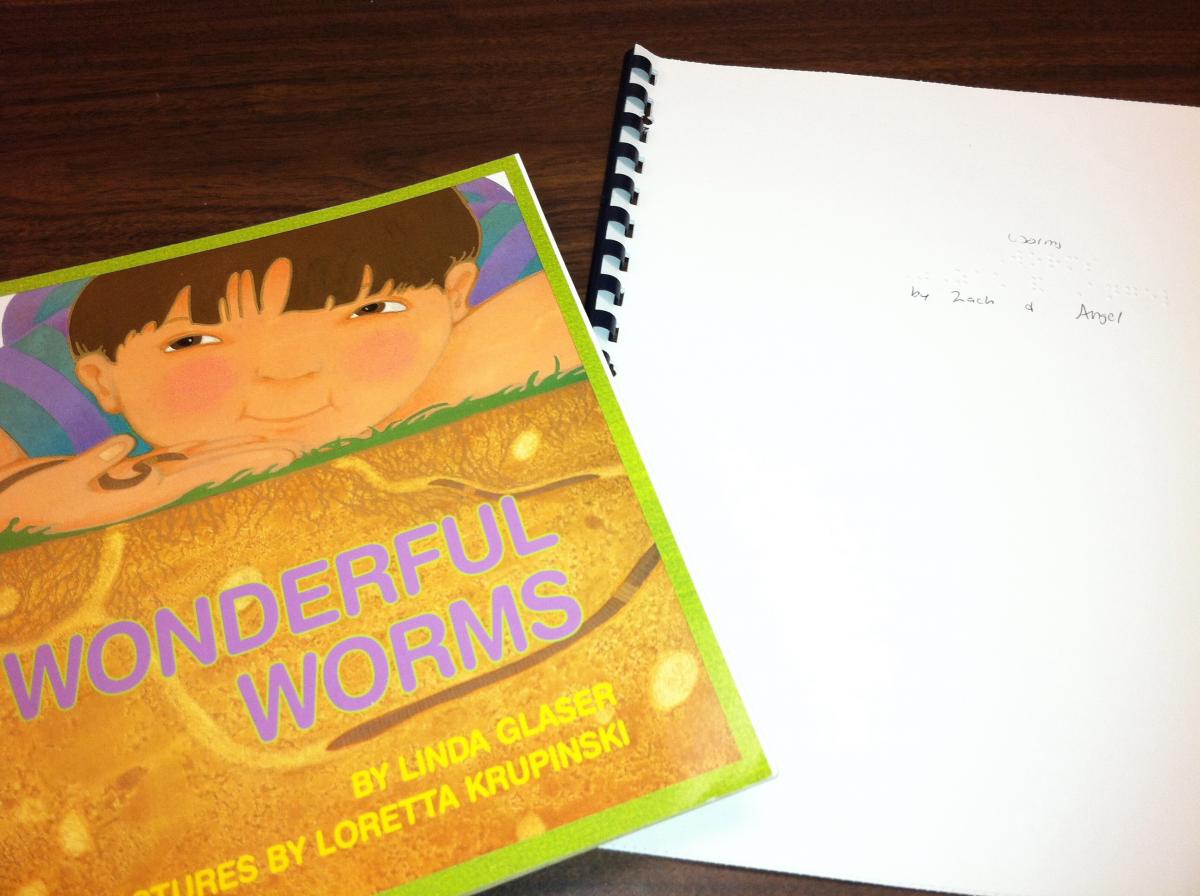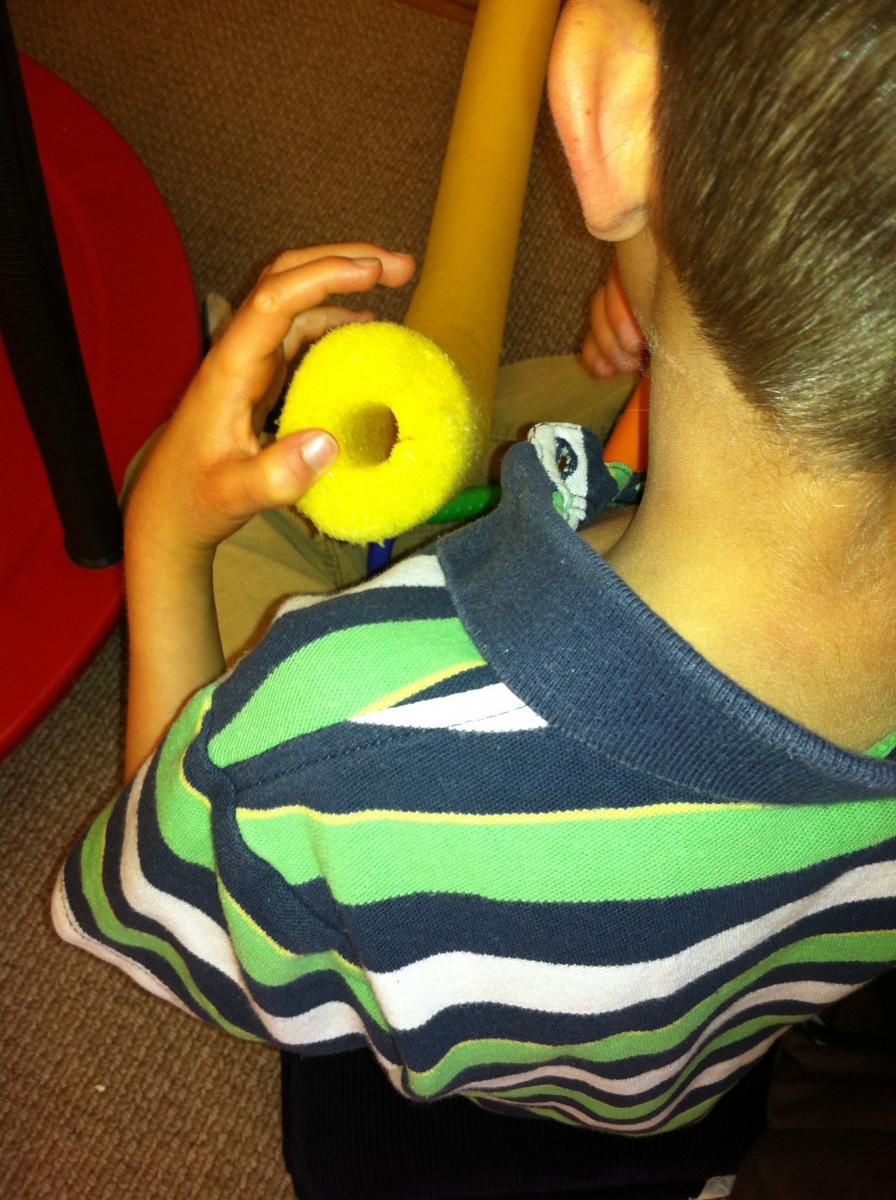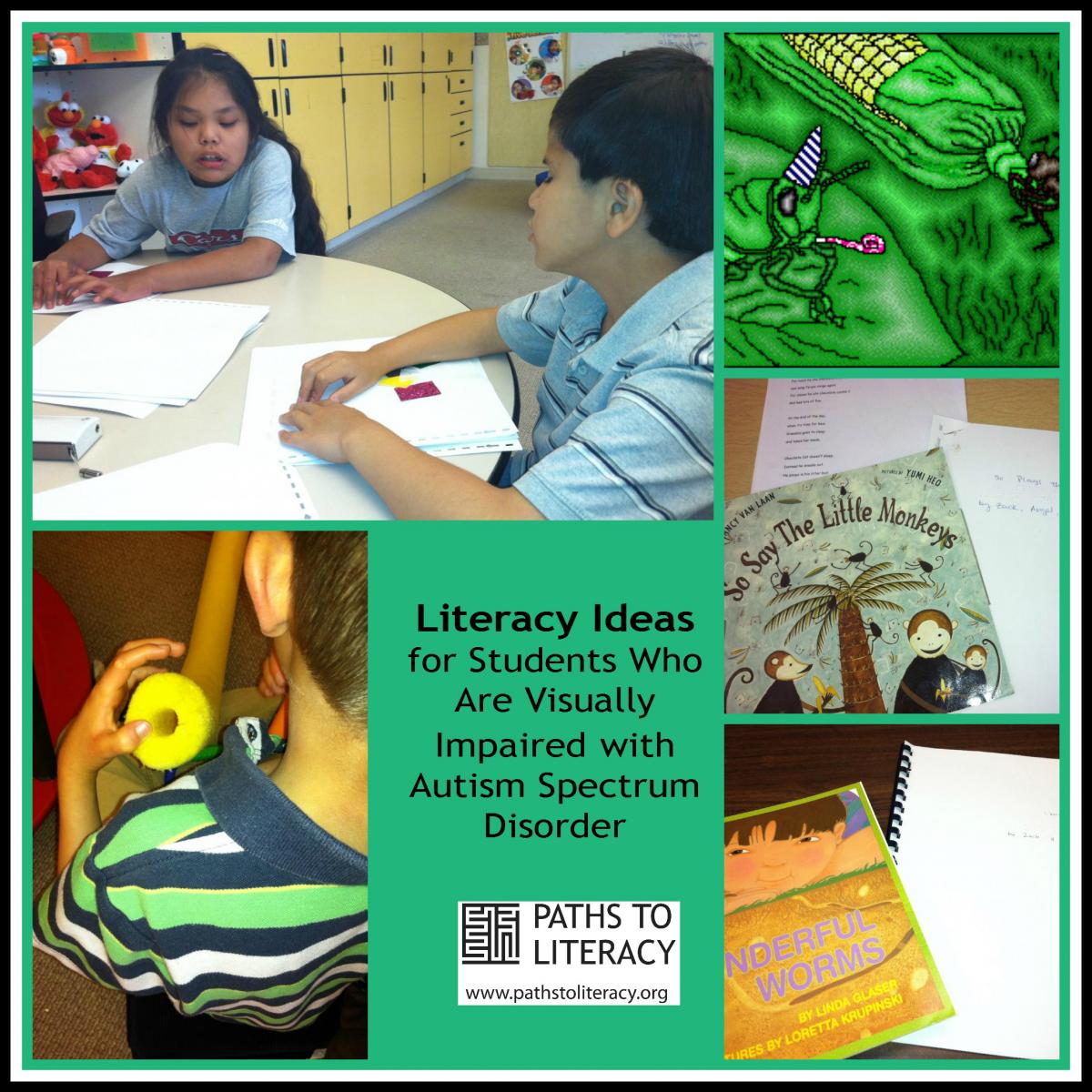Literacy Ideas for Students Who Are Visually Impaired with Autism Spectrum Disorder
 By Megan Mogan, Speech-Language Pathologist
By Megan Mogan, Speech-Language Pathologist
What is "Adapted Adapted Literacy"?
Over the years, you may have noticed a shift in the population of students you serve as TVIs, Speech Therapists, Orientation and Mobility Specialists, etc. Public and Special school settings increasingly serve students who have visual impairments along with intellectual disabilities or autism spectrum disorders. Like many other characteristics of their diagnoses, these students have language and literacy skills that fall across a “spectrum.” Some can read braille fluently but have no comprehension of the information. Others have tactile defensiveness and don’t even want to come into contact with braille. Many are visibly dissatisfied with story content that has nothing to do with them!
We noticed a lot of adapted literacy resources in our school library and on the Internet. We quickly realized that our students required adapted adapted literacy! No two VI students with an Autism Spectrum Disorder or Mild Intellectual Disability are the same, and we felt this should be reflected in their early language and literacy instruction.
Introducing the Adapted Literacy
- Answering comprehension questions
- Sequencing
- Sight word identification
- Phonological Awareness
- Staying on a shared topic
- Answering questions about someone else
- Tracking
- Matching tactual symbols with language
- Developing social skills
- Understanding basic concepts
- Touching varied textures
To download a copy of our Adapted Literacy Framework, visit this page...



We have created some examples of Adapted Literacy Framework:
The Ant and the Grasshopper and Worms
Step-by-Step Guidelines for Creating Your Own Adapted Adapted Literacy Program
We have also created step-by-step guidelines for creating your own adapted adapted literacy program
The basic steps are as follows:
1. Pre-Planning
2. Original Literature
3. Writing Process
4. Writing -- the finished product!
5. Illustrating
6. Reading Aloud
<7. Performing
Tell us about your experiences with adapted adapted literacy!


Comments
Some studies needed for autistic children blind